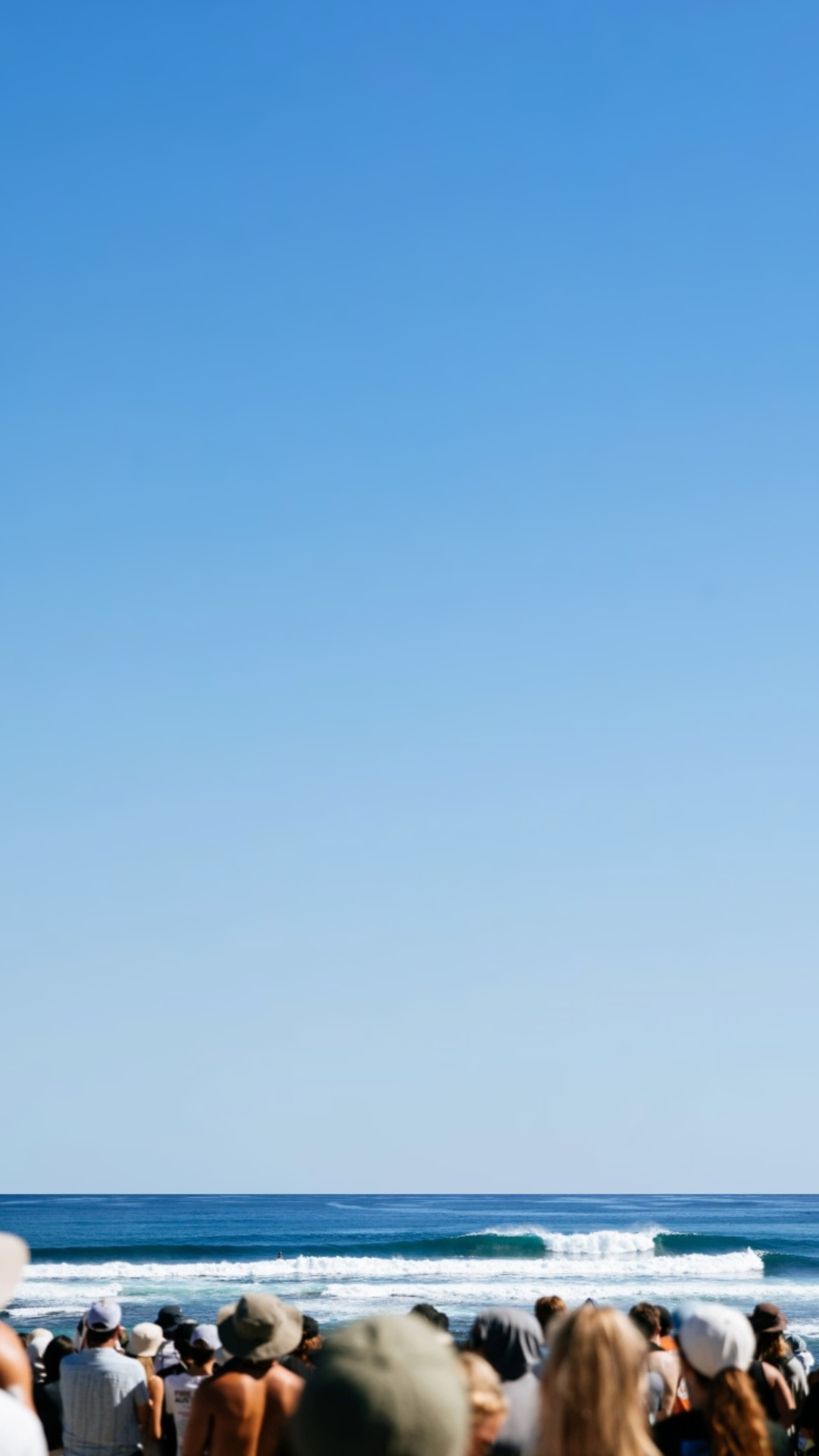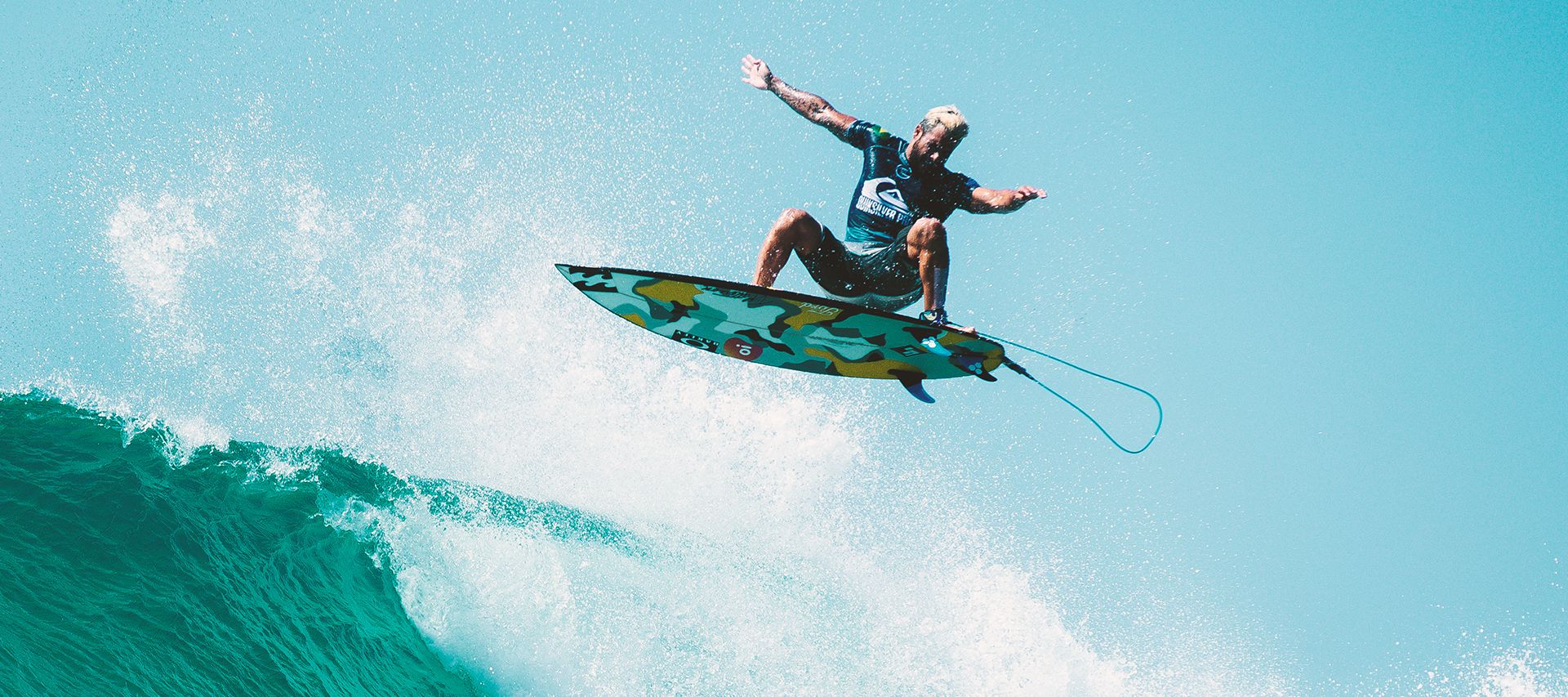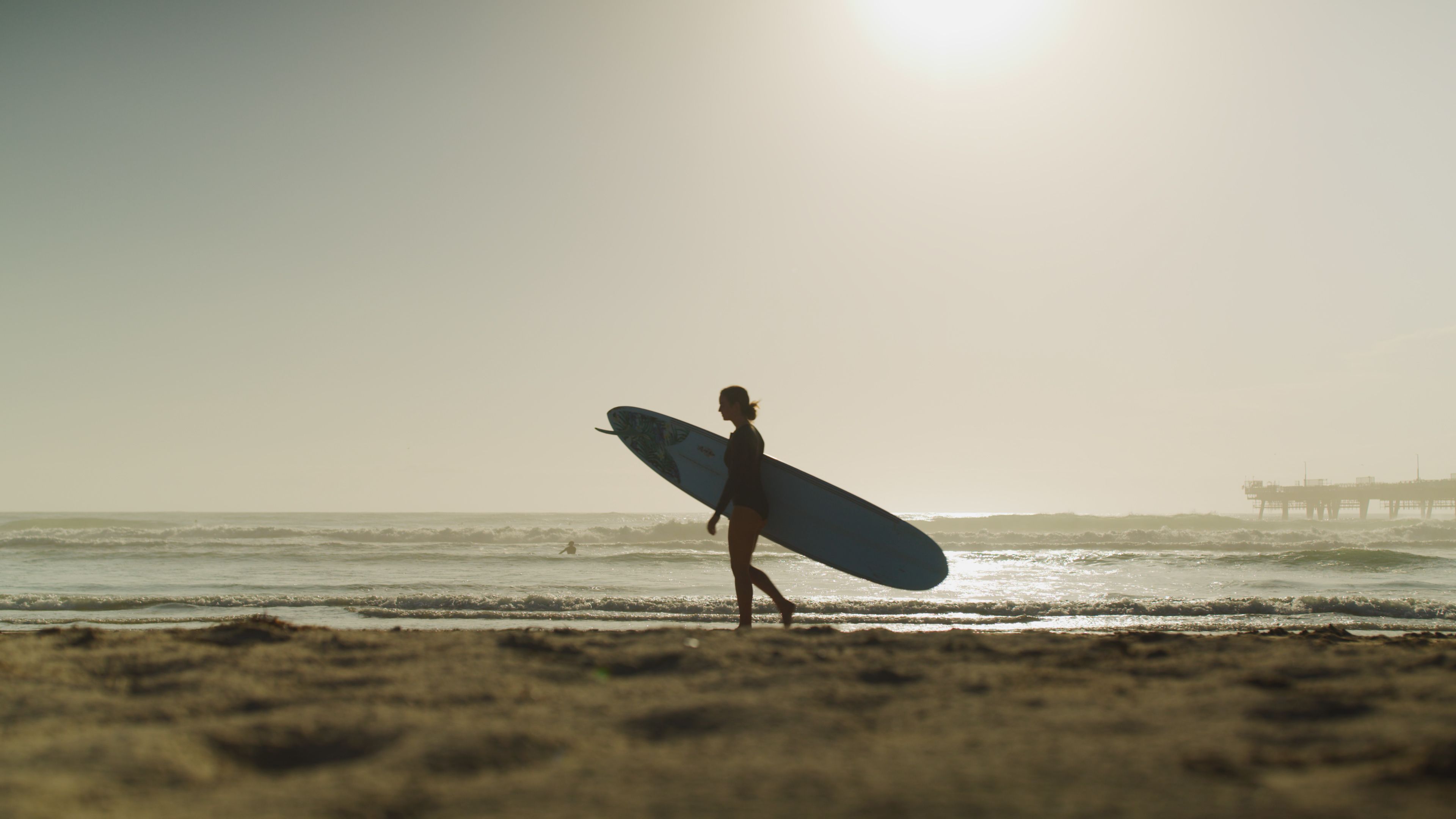
Who’s laid down surfing’s biggest cutback lately — Aussie Jack Robinson carving his way to Bells Beach glory, or South African veteran Jordy Smith lighting up El Salvador? Few moves in surfing are as iconic as the cutback — that powerful 180-degree turn that slings a surfer back to a wave’s power source. And few surfers can dissect the face of a wave with the combination of brute force and surgical precision as Jack and Jordy with the rooster tails of spray they leave in their wake.
But perhaps the biggest cutback hasn’t happened in the water at all. It’s on dry land, where a groundswell of surfers have turned their backs on the big surf brands that morphed from garage dreams into corporate machines. Surfing has always been about authenticity. And today, more surfers are searching out backyard board shapers and grassroots labels — brands with saltwater still running through their veins. Companies cutting back to the source, crafting gear for the love of it, not just the profit.
Who’s laid down surfing’s biggest cutback lately — Aussie Jack Robinson carving his way to Bells Beach glory, or South African veteran Jordy Smith lighting up El Salvador? Few moves in surfing are as iconic as the cutback — that powerful 180-degree turn that slings a surfer back to a wave’s power source. And few surfers can dissect the face of a wave with the combination of brute force and surgical precision as Jack and Jordy with the rooster tails of spray they leave in their wake.
But perhaps the biggest cutback hasn’t happened in the water at all. It’s on dry land, where a groundswell of surfers have turned their backs on the big surf brands that morphed from garage dreams into corporate machines.
Surfing has always been about authenticity. And today, more surfers are searching out backyard board shapers and grassroots labels — brands with saltwater still running through their veins. Companies cutting back to the source, crafting gear for the love of it, not just the profit.
Bond academics Daniel O’Brien and Craig Sims have captured this shift perfectly. In their study of the surf industry’s evolution — from its 1950s Californian roots to a global lifestyle juggernaut — they explain how surfing’s potent cocktail of adventure, hedonism, rebellion and exclusivity created a powerful cultural pull far beyond the waves.
Bond academics Daniel O’Brien and Craig Sims have captured this shift perfectly. In their study of the surf industry’s evolution — from its 1950s Californian roots to a global lifestyle juggernaut — they explain how surfing’s potent cocktail of adventure, hedonism, rebellion and exclusivity created a powerful cultural pull far beyond the waves.
They introduced the concept of subcultural power — the magnetic appeal a true subculture holds over the mainstream. Maintaining authenticity is key. Lose it, and you lose the magic. The surf boom wasn’t built on core surfers alone. It was turbocharged by "passive subculturalists" — people who didn’t surf much (or at all) but wanted a slice of the lifestyle. Boardshorts, logo tees, sun-bleached dreams.
It worked. Until the core surfers walked away.

They introduced the concept of subcultural power — the magnetic appeal a true subculture holds over the mainstream. Maintaining authenticity is key. Lose it, and you lose the magic. The surf boom wasn’t built on core surfers alone. It was turbocharged by "passive subculturalists" — people who didn’t surf much (or at all) but wanted a slice of the lifestyle. Boardshorts, logo tees, sun-bleached dreams.
It worked. Until the core surfers walked away.

The business of surfing
The global surfing market is tipped to reach US$5.5 billion by 2030, driven by a booming surfboard market, better tech, and the timeless allure of the ocean. But the soul? That’s been tested.
The "Big Three" — Rip Curl, Quiksilver, and Billabong — are now owned offshore. The $350 million sale of Rip Curl to Kathmandu was the final nail in the coffin of Aussie surf brand independence. Big logos are out. World Champion John John Florence tore up a US$30 million Hurley deal to start Florence Marine X, building gear for the sort of adventures he lives for.
It is happening everywhere. Byron Bay’s backstreets are buzzing with indie brands. Wetsuit makers like needessentials, no logos, no hype, just quality and passion, have quickly gained a loyal following among surfing’s original sunburnt and salt encrusted consumers.

What that means for the WSL
Surf brands have traditionally maintained authenticity through sponsorship of World Surf League (WSL) events, such as the Bells Beach Rip Curl Pro. The most iconic event in surfing, Hawaii’s Pipe Masters, was sponsored by Billabong for 17 years. Here on the Gold Coast, Quiksilver had a 19-year relationship with the Gold Coast Pro.
In recent years big surf brands have walked away from the pro tour, and also significantly reduced their stable size of sponsored athletes, forcing both the WSL and its competitors to broaden their horizons in the search for new corporate partners. WSL APAC president Andrew Stark says while the changing ownership models of the major surf brands initially posed a challenge, it also created new opportunities.
“I think that the appealing thing about us is we are a sport and a lifestyle,” he says.
“We are not like a contact sport where you play when you are younger but then you just become a fan and you watch because your body is worn out.
“Surfing is a whole-of-life sport.’’
Within that evolving age demographic is an opportunity. The professional tour no longer relies on its ability to help the major labels sell boardshorts to grommets. Older surfers want cars, they want an annual holiday, and they are interested in a healthy lifestyle. Billabong and Quiksilver have been replaced on the WSL Championship Tour by car manufacturers, Lexus and GWM; health food company Bonsoy is now a major player.
“GWM has launched a car in Australia called the GWM Tank, which is a four-wheel drive vehicle that's a lifestyle car,” Stark says.
“You take it on the beach, you throw your boards in the back, so the synergy between the GWM Tank product and the WSL and surfing and what we do is there.
“What we're looking for in partners is brands and companies that have a synergy with what we do.
“Brewer Stone and Wood’s brand was born and bred on surfing and the lifestyle of the Northern Rivers and Byron Bay. Every ad they've ever run since the inception of that brand has featured a surfer in it. So, it has got natural synergy and natural fit.”
Selling the dream
Check any surfer’s travel bucket list and there’s a fair chance the WSL holds contests at most of them. In 2025, Tahiti, the Gold Coast, and Jeffrey’s Bay in South Africa are back alongside old staples such as Bells Beach, Portugal, and Pipeline.
The WSL's multi-platform coverage always features stunning content of the regions’ best attractions — in Margaret River it might be a winery visit; in Victoria, a road trip along the Great Ocean Road.
When the Gold Coast Pro begins this week, viewers will be fed a steady stream of the greatest female surfer in history, Steph Gilmore, hanging around her favourite “Goldie” locations with friends.
“If you think about the industry in terms of the business of surfing, go back and look at the fact that Quiksilver, Billabong, and Rip Curl, the biggest surf brains in the world, started in Australia and were built on the back of aspiration,” Stark says.
"The beauty of our sport is that places like Bells Beach, or Burleigh Heads where we will hold the contest this week, recreational surfers paddle out to those breaks every day.
“And they become these aspirational tourist destinations. Which is why, from a business perspective, government partnerships are so important to us.
“It is a destination marketing campaign to the world.”
The WSL’s real challenges
Of course, nature has the final say. Cyclone Alfred ripped apart the banks at Snapper Rocks, shifting this year’s Gold Coast Pro to Burleigh. Other contests wait days for decent swell which makes it impossible to play hardball in negotiations with broadcast partners. Free entry at most events is a blessing and a business challenge.
“It’s a tough gig,” Stark says.
“It is an incredibly hard business to run based on weather and sandbanks and forecasts and winds, so we really have to take our partners on the journey.
“But what I would say is, when the sun is out and the waves are pumping, there's not a better sport to watch.”

Surfing and the Gold Coast
The clue lies in the name of our most iconic visitor destination – Surfers Paradise.
Stroll along the Gold Coast beaches after Cyclone Alfred and you will see the Nile River, a dredging behemoth, furiously pumping sand to restore both the look, and crucially the quality of the sandbars that create perfect waves along our shores.
Digging into the council coffers to restore the beaches wasn’t done on a whim.
Surfing plays a major part in the fabric of Gold Coast life the city has a Surf Management Plan that aims to balance the needs of all beach and ocean users, ensuring the city’s beaches remain healthy, clean, open and inclusive.
On the Gold Coast, surfing isn’t just culture — it’s economy. A 2020 report found surfing contributed $542 million to the Gold Coast, supporting 6,348 jobs.
And that was before the massive spike during COVID where it seemed every lapsed surfer or bucket lister, decided it was time to buy a board and hit the beach.
Surfing isn’t just what we do. It’s who we are.

Bond University is the Official Higher Education Partner of World Surf League Australia.

Original thinking direct to your inbox

Stories from Bond